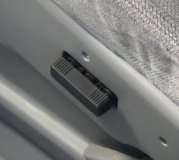Hi Mandark6. Welcome to the forum. First of all, you have to determine if the battery is dieing due to a drain or because it is not being fully recharged while driving. Start by measuring battery voltage with a cheap digital voltmeter. When fully charged, it should read around 12.6 volts. Next, measure the voltage again while the engine is running. It must be between 13.75 and 14.75 volts. Raise engine speed a little and verify the voltage stays the same or creeps up a little. If the voltage drops below 13.75 volts during the engine running tests, the battery is not being charged enough. If the voltage is down around 11 volts or less with the engine off, the battery has a dead cell and must be replaced. If the voltage drops only when raising engine speed, suspect a slipping drive belt.
If the voltage never reaches 13.75 volts and stays at least that high with the engine running, suspect a defective generator, (aka alternator, but that's a term copyrighted by Chrysler). Further testing will be needed to see if it is capable of delivering the necessary current. If it is, but doesn't, suspect a defective voltage regulator which controls the generator. On most Ford models the voltage regulator is built into the generator, and the two are replaced at the same time as an assembly.
For all the inoperative items, suspect blown fuses from the jump start. These circuits expect to see 12.6 volts when you turn on the ignition switch, then the voltage should rise slightly when the engine starts. When the battery is jump started, there will be the higher 13.75 to 14.75 volts present in the system as soon as the ignition switch is turned. That creates a larger initial current surge that can cause fuses to blow when there really isn't a problem in the circuit. To prevent this from happening again, leave the jumper cables, (or battery charger) on for a few minutes to charge the battery, then remove them before turning on the ignition switch and starting the engine.
Caradiodoc
Monday, May 31st, 2010 AT 12:40 PM


